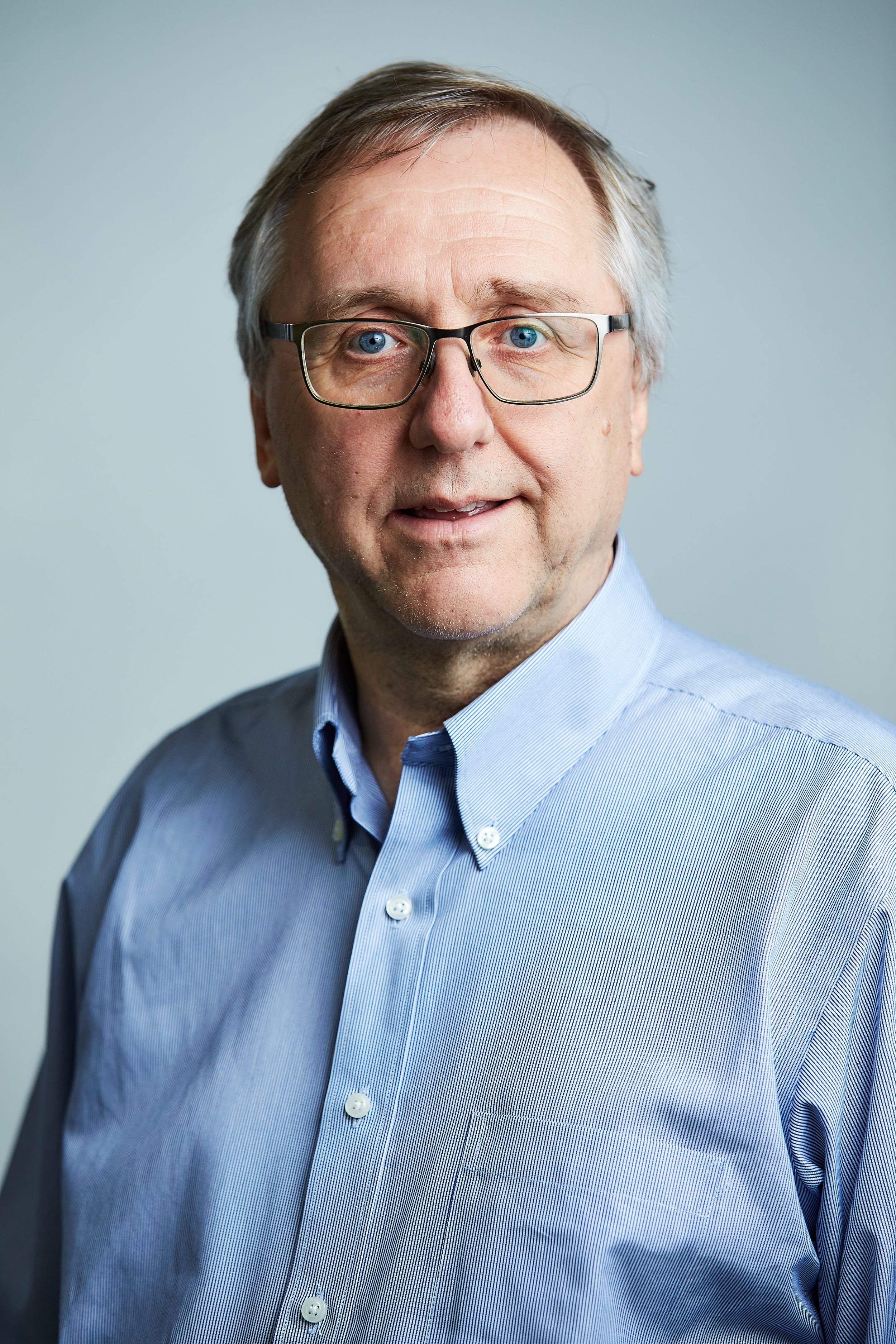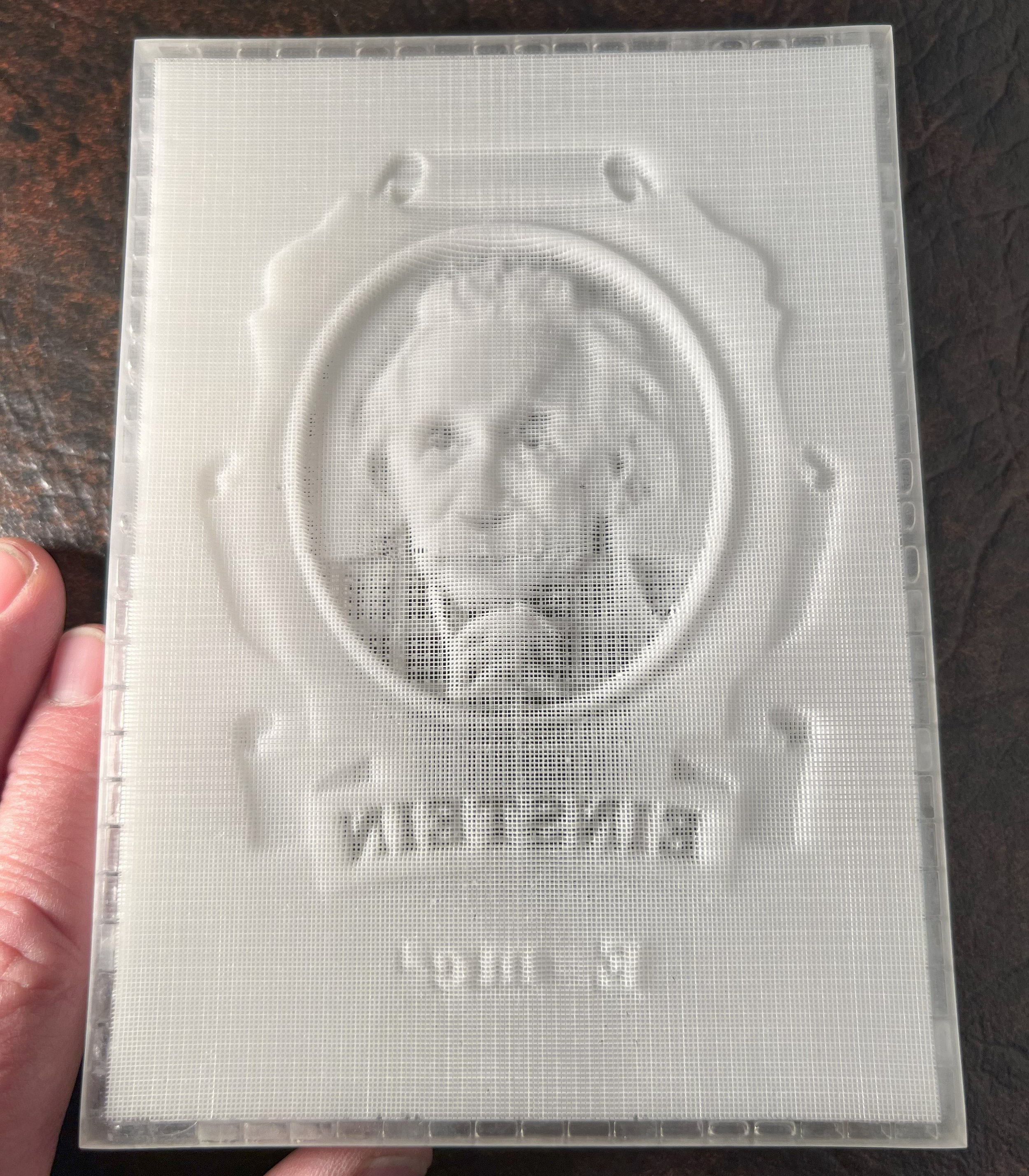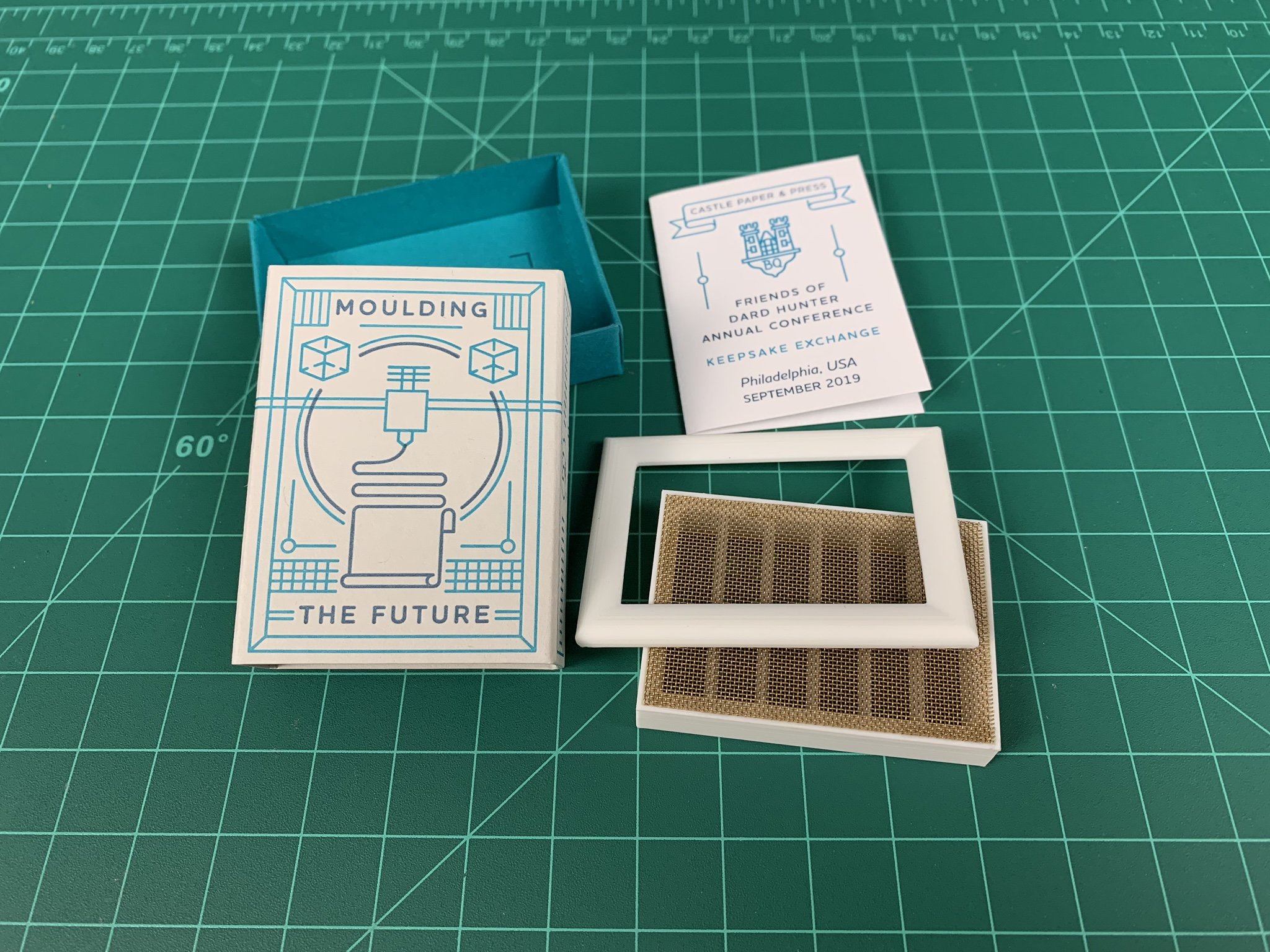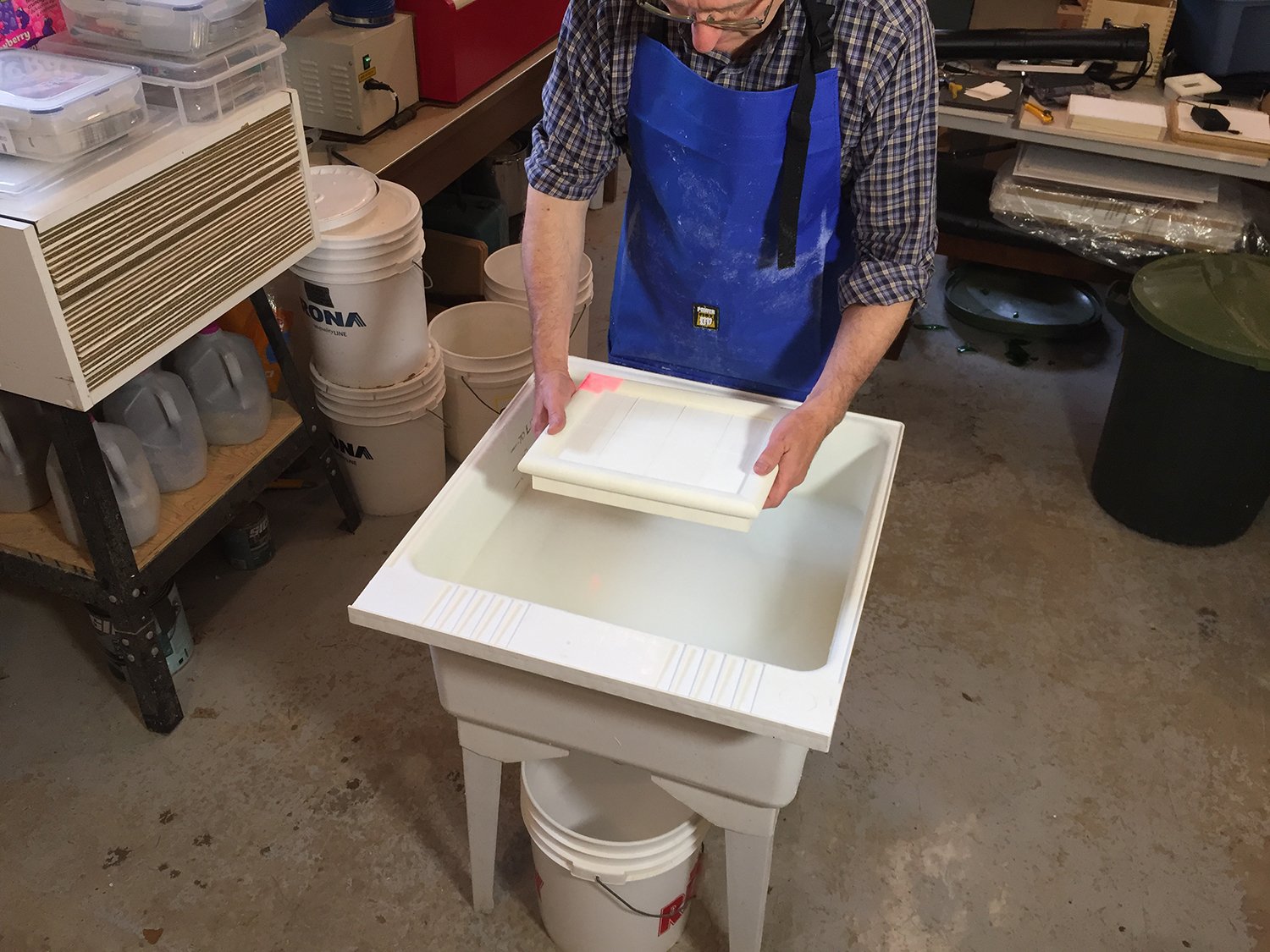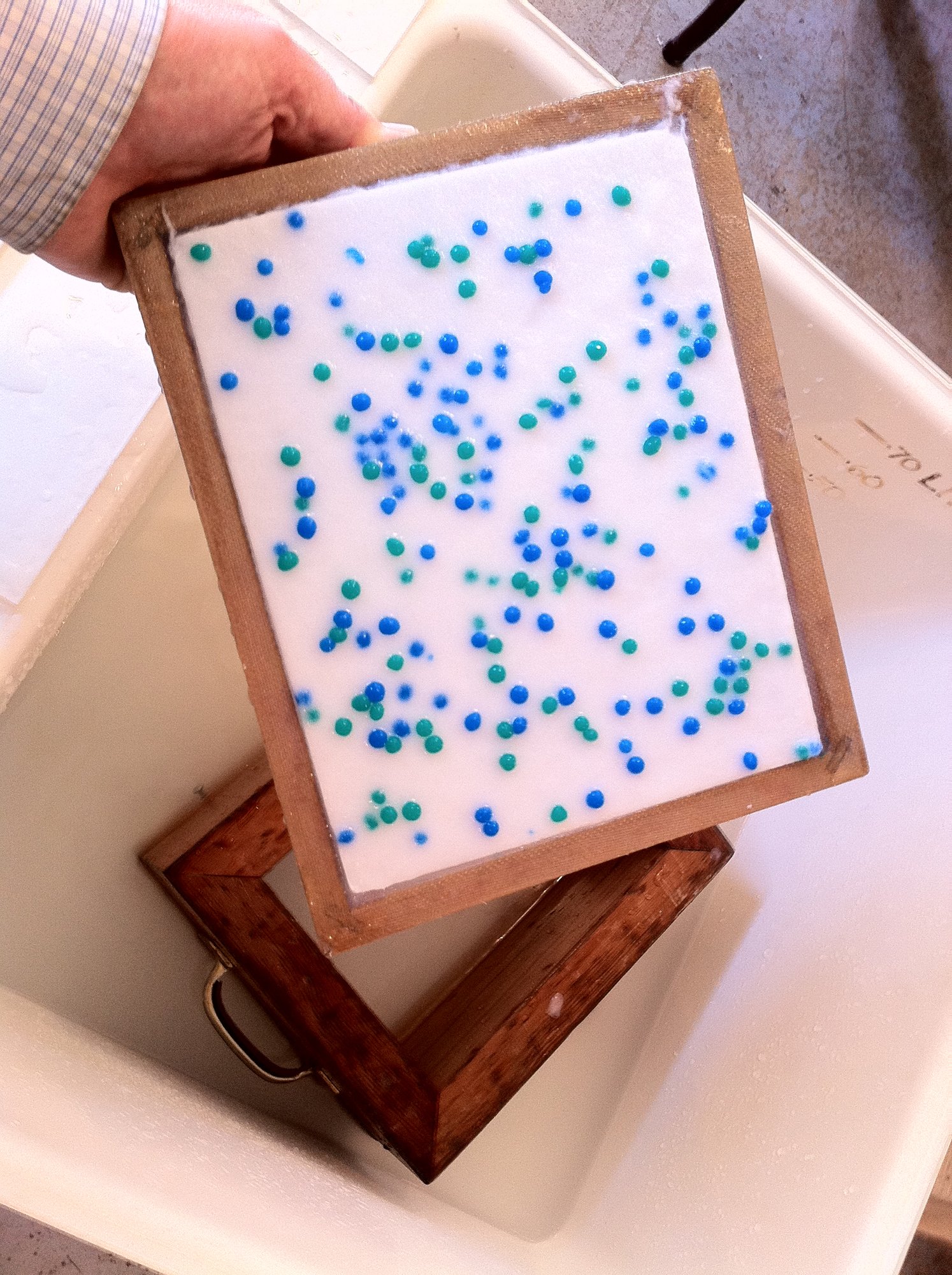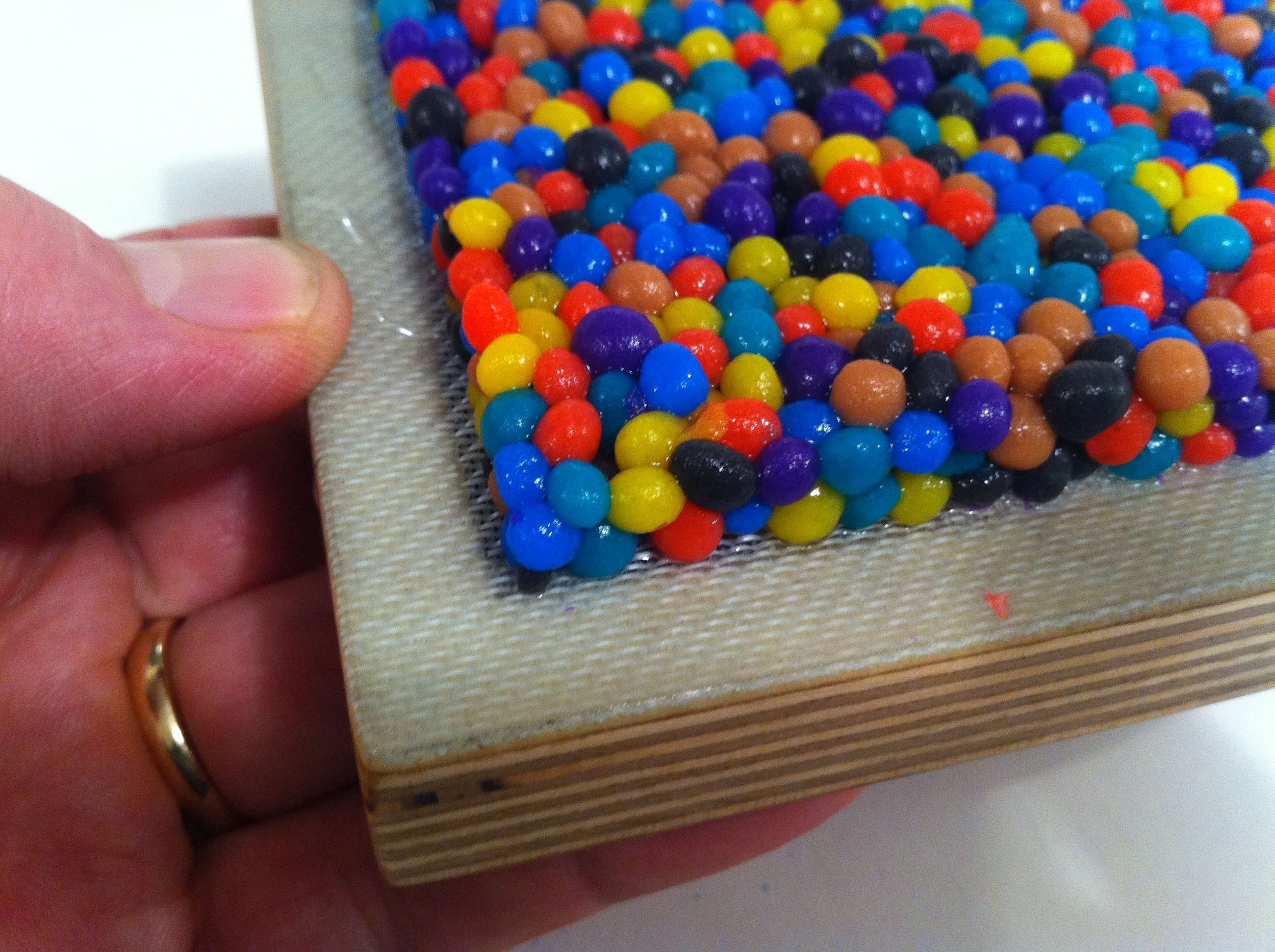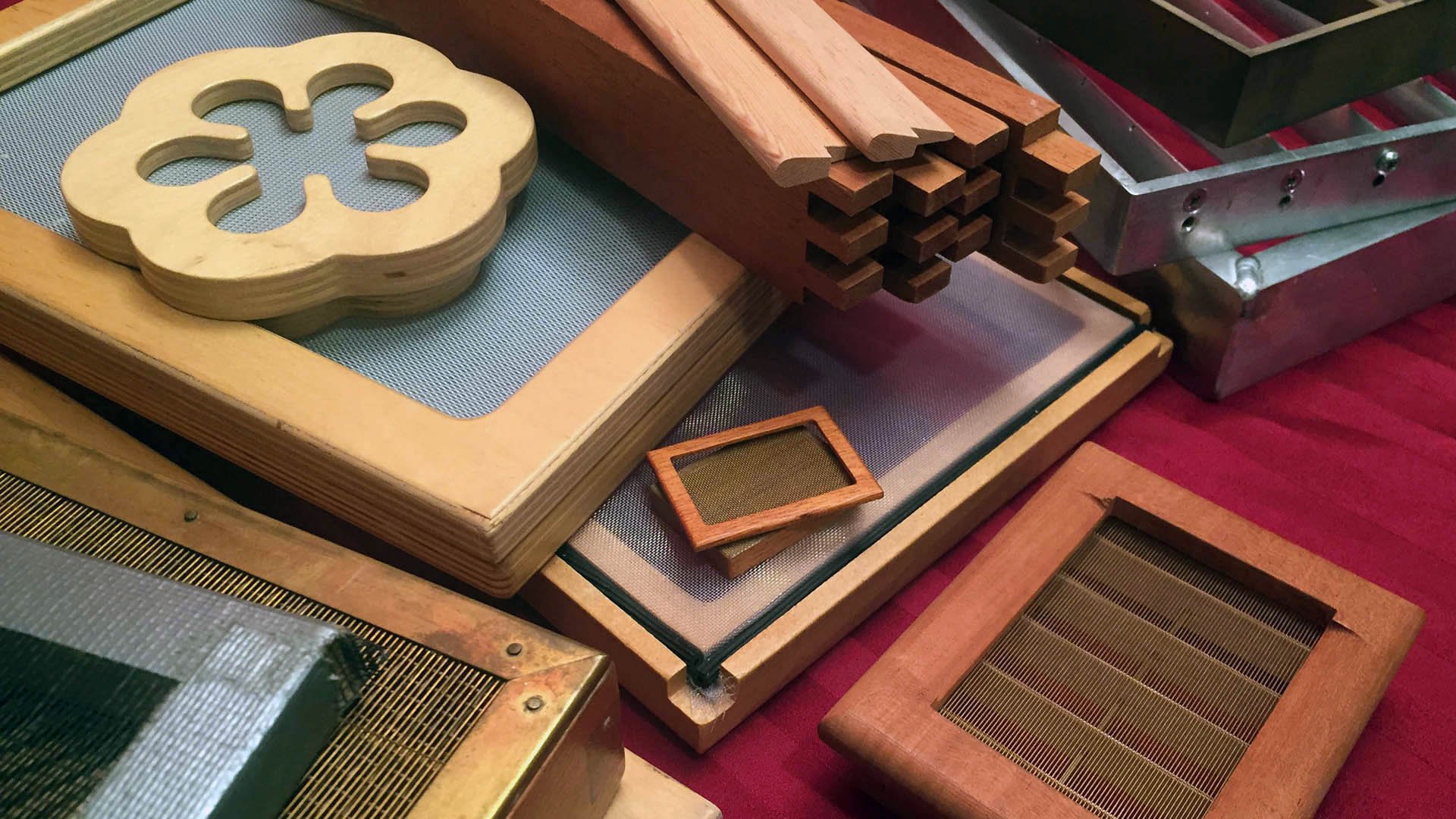
Brian Queen
PAPERMAKING CHAMPION
Brian has consistently used, experimented with, pioneered, and shared various new ways of approaching hand papermaking with new technology. He is one of the most active and generous members of our community routinely sharing an endless font of knowledge, while constantly innovating and collaborating with others.
Brian Queen
Essay by Maria Zytaruk
From the outside, the garage with white siding looks like any other in the back lane of the sedate 1960s Calgary suburb of Varsity. This particular garage, though, has never stored a car, or boat, or gardening tools. If neighbours happen to catch a glimpse inside this garage, they would be forgiven for thinking some kind of elaborate cooking operation was going on there with all its vats, strainers, scales, scoops, mixers, and mallets. But exactly what kind of food item would need to be dried on the strange, ceiling-mounted wooden rack made of levers?
Over the years, a steady stream of hand papermakers, book artists, letterpress printers, and scholars have made their way to the full-scale papermaking studio that Brian Queen has built in this garage. Alongside that coveted piece of equipment by hand papermakers, a Valley Beater, the studio features a full-size hydraulic jack press, drying box with fan, stacks of felts, moulds of various sizes, and a Vandercook SP 15 press (for testing out the printing quality of handmade paper, what else?).
As I ride my bike down the back lane, undo the latch of the gate, and enter the studio, I never quite know what's in store for me—it might be a new light-and-shade watermark, designed and cast on a 3D-printed mould by Brian, a tale from a visit he once made to the Paper and Watermark Museum in Fabriano, or his telling me that he can easily laser engrave a woodblock of a plant specimen illustrated in the sixteenth-century herbal I will be teaching that week in my undergraduate book history course. If he has some freshly beaten pulp, we might cast a few sheets of paper in order for me to receive some pointers on technique.
When a generous donor to the university’s new Book Arts Lab passed along some linen scraps from their embroidery for the lab’s papermaking, Brian suggested that not only should we make paper for the donor from the linen but it should also feature a bespoke watermark. Knowing that the donor had an alpine garden, I suggested that we combine the donor’s initials with a drawing of the mountain lady-slipper. The donor was moved when we presented them with the sheet of handmade, watermarked, linen paper. In the process, I received an invaluable crash course on the difficulties of translating a simple line drawing into a watermark (whether wire or 3D printed). Now when I look at the watermarks in the hand-press books I teach, I have a deeper understanding of why they look the way they do.
In his studio, Brian is training the next generation of hand papermakers. Artist Flora Shum, the co-founder of Toronto’s Paperhouse Studio, has recently done a course with Brian tied to her digital watermark project. Tamara Lee-Anne Cardinal, Calgary multi-media artist of Cree descent, has received training by Brian in connection with her work on the use of native plants for papermaking. Brian has helped to break down barriers to hand papermaking in other collaborations as well, such as his contributions to the open-access 3Dhotbed project. This site makes the data available for 3D-printed replica models of tools used in teaching book history. He is currently working with Canadian printmaker and papermaker Helmut Becker to create a 3D model for a Hollander beater that Becker fabricated in the 1970s and 80s. Their intention is to make the models and drawings open-access.
Just as his paper studio serves as a site of instruction and making, it is also a laboratory for Brian’s own paper-related experiments and a node in international networks. This past year, Brian created a 3D-printed light-and-shade watermark of Albert Einstein. In his studio, when he wasn’t at his day job as the co-owner of a commercial lighting business, Brian produced 2,400 swatches of the Einstein watermark—a portion bound for the International Association of Hand Papermakers and Paper Artists’ printer in Latvia, and others for publications in the US and Canada. A different set of watermarked papermaking moulds was sent to Norway as a part of a collaboration with an artist there. When one thinks of Brian’s watermark samples and moulds travelling to far-flung places across the globe, and that the watermarked papermaking moulds will be used to fashion still more examples of his watermarks, one begins to appreciate the international impact of his carefully honed craft.
Within Calgary, in institutional contexts, Brian’s impact is likewise visible. In the 1990s, he was instrumental in Alberta University of the Arts’ establishment of its papermaking facility. For the last two years, Brian has played an integral role in the development of our new Book Arts Lab in the English Department. The Department had housed some printing presses since the 1970s, but the collection had fallen into disrepair and was little used. Brian had a vision of a full-scale book-arts operation where students could not only learn the basics of letterpress, but also hand papermaking and bookbinding. He understood the agency associated with the process of “critical making” and how empowering it would be—in a moment when the “death” of the book is continually asserted and censorship is on the rise—to give students the opportunity to create their own books, on paper they made, and from type they set of their own words. Two years later, English’s new Book Arts Lab is home to a Vandercook press and a small fully-equipped papermaking studio. We are in the process of creating a bindery, thanks to donations, facilitated by Brian, of historical equipment from the local chapter of the Canadian Bookbinders and Book Artists Guild.
One of Brian’s recent collaborations with the Book Arts Lab combines his expertise in papermaking with his commitment to sustainability. This past spring in the campus community garden, Brian and I sowed seeds from four Belgian varieties of fibre flax first cultivated by Helmut Becker in the 1990s at the University of Western Ontario for papermaking. Along the way, students and community members have helped with the weeding, watering, and harvesting of the flax. After we rippled and winnowed the flax, Brian completed the retting in his garage. On a sub-zero day in November, a group of us were guided by a community member in how to break, scutch, and then comb the flax using hackles. This winter we will make flax paper in the lab.
Many congratulations, Brian, on this well-deserved honour.
Maria Zytaruk, Ph.D., Professor of English and Curator of the Book Arts Lab, University of Calgary
Further Resources:
For Helen Hiebert’s 2023 interview with Brian Queen, listen here and for an interview conducted by Carolyn Qualle, see vol. 21, no. 2 (2021), pp. 3–6 of Book Arts, the magazine of the Canadian Bookbinders and Book Artists Guild.
Selected Publications by Brian Queen:
“Moulding the Future: 3-D Printed Chiaroscuro Watermark Moulds,” in Hand Papermaking, vol. 37, no. 2 (Winter 2022): 37–41.
“Computer-Driven Laser Cutter for Chiaroscuro Watermarks,” in Hand Papermaking, vol. 27, no. 1 (Summer 2012): 26–29.
“Beater Basics, Mysteries Revealed,” in IAPMA Bulletin 59 (2019–2020): 74–75.

Become an NAHP Member
Join our vibrant hand papermaking community and access your membership benefits.

